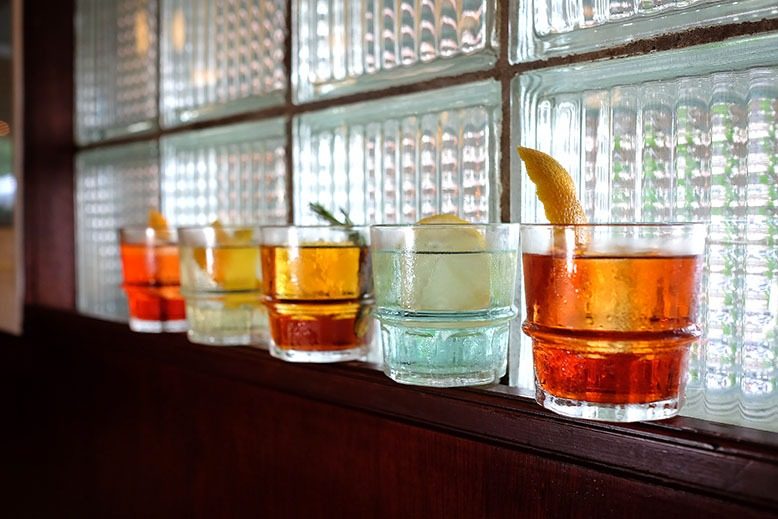
Like the Italian food scene in New Jersey, the world of Italian cocktails is vast and varied. It includes specialty wines and spirits, such as amaro, vermouth, prosecco and limoncello, which are usually categorized as aperitivo (before a meal) or digestivo (to aid digestion).
Variations on the Aperol spritz, which gets its name from the zesty, orange-hued aperitif, have swept the world. But in winter, no Italian cocktail warms and satisfies like a negroni. It’s easy to make: one part gin, one part red vermouth (semisweet), one part Campari, a vibrantly red, bitter Italian liqueur. Pour over ice, add orange peel, and you’re set.
The negroni is believed to have been invented in Florence in 1919. Nearly three decades later, Orson Welles helped popularize the cocktail, which he drank for the first time while shooting Black Magic in Rome. “The bitters are excellent for your liver, the gin is bad for you,” he was quoted as saying in the Coshocton, Ohio, Tribune. “They balance each other.”
The negroni has become a fixture. Even before settling on the opening menu for Nettie’s House of Spaghetti in Tinton Falls in 2018, co-owner Tania Calabrese was set on offering a negroni on tap. “To me, the negroni is just your quintessential Italian aperitif,” she says.
Now Nettie’s offers six variations. For the bitter averse: the bergamot negroni, featuring sweet bergamot (a citrus native to Italy) liqueur; or the white negroni, with bianco vermouth and Luxardo Bitter Bianco, slightly sweeter than Campari. “They’re good ways to get into a bitter drink without it being super-overwhelmingly bitter,” Calabrese says.
While the classic recipe calls for Campari, bartenders have experimented. This is due partly to the brand changing its recipe in 2006, no longer achieving its bright red color with a dye, called carmine, derived from cochineal bugs. These days, Campari uses red dye No. 40, an artificial coloring agent linked to cancer and other medical conditions. “It may not occur to people who think of themselves as mindful eaters to question why a spirit is bright red, but it should,” writes Shanna Farrell in her 2021 book, A Good Drink: In Pursuit of Sustainable Spirits. “We have the power to spend our money on alternatives…to customize our negroni orders.”
For Nettie’s house negroni, Calabrese uses St. Agrestis Inferno Bitter Aperitivo, which gets its bold red color from hibiscus flowers and vegetable extract rather than artificial coloring. It’s produced in Brooklyn, but the company was started by brothers Matt and Louis Catizone, the latter a Rutgers Business School grad.



